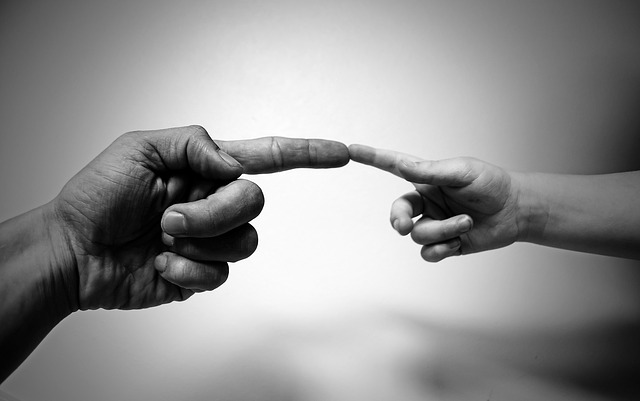Early this summer, I spent several days in a hospital bed, tethered to an IV, with what proved in retrospect to be anaplasmosis (a nasty bit of tick-borne business), complicated by viral meningitis. It was all rather unpleasant.
Among other things, I had a constant, moderate headache punctuated by crushing head pain- easily, the worst headaches I’ve ever experienced. I was given narcotics when the pain was at its worst, and they didn’t do much for me, despite their two distinct advantages. The first is that these drugs are genuinely effective at treating pain; the second is that I had every reason to expect them to work.
The latter matters, because placebo effects are real. They are not a therapeutic effect attributable to the specific actions of a drug or modality. They are a therapeutic effect that is independent of that specific action, and are thus deemed “nonspecific.” They relate to our expectations. When we expect a treatment to work, our body reacts accordingly, and that, in turn, can be therapeutic.
This should be no great surprise. Most of us have heard of the “endorphins” accountable for a runner’s high. These, essentially, are the body’s native narcotics, and it is receptors to such compounds that explain why non-native narcotics work at all. They are chemically enough like our own, endogenous analgesics to bind to the same receptors.
In any event, narcotics really do work; and, as a physician who has prescribed them many times to good effect, I had every reason to expect them to work. Even so, they didn’t do much for my headaches.
In contrast, my wife’s head massages were stunningly effective. This may in part be due to the fact that massage is effective in the treatment of pain. Colleagues and I have studied massage for osteoarthritis, and published very encouraging results. That research, sponsored by the NIH, is on-going, as we explore longer term effects, cost-effectiveness, and mechanisms.
For now, those mechanisms remain mostly speculative. Massage may influence local blood flow, and inflammation. Its immediate effects may relate partly to the phenomenon known as “gating,” in which sensory stimuli simply block out the transmission of pain stimuli in the spinal cord- although this does not explain the benefits that persist long after the massage is done. Much of the on-going work suggests that the effects of massage may relate principally to relaxation responses, and the autonomic nervous system.
I will go out on a limb, though, beyond the limits of the scientific evidence we have, to suggest that my wife’s loving hands had something unique to do with it. Catherine is not a trained massage therapist. She is, in fact, a neuroscientist, although that is not necessarily relevant. I think the relevant consideration is that she loves me. She put her hands on my head in a fervent effort to relieve my pain- and did.
At the time, I was just greatly relieved, and deeply grateful. Catherine’s hands held the answer that narcotics did not have. These weeks later, with those headaches receding into memory, and the episode into family lore, I am reflecting on the therapeutic modality of human touch.
To some extent, the mechanisms of my relief may have been those of massage in general, whatever exactly those are. But there are reasons to speculate further, just as there is cause for cautious skepticism.
A device called Cefaly prevents migraines in roughly 50% of those who try it according to the available data. Structurally a visor (or, perhaps, tiara), the device produces an electromagnetic field. According to the company, the device “generates precise micro-impulses in order to stimulate the nerve endings of the trigeminal nerve.” This, in turn, so goes the tale, prevents migraines.
This is particularly intriguing because the visor merely sits on the head- rather as my wife’s hands sat against my own. There are no direct connections between Cefaly and the trigeminal nerve; no wires running into the central nervous system. The device generates an electromagnetic field on the surface of the body, and the rest ensues.
Human beings generate electromagnetic fields as well. This is not conjecture;technology exists to image these fields. Since the fields emanate around our bodies, they overlap as we approximate one another before ever we touch.
In fact, the distinction between touch and proximity is substantially a matter of virtual (albeit, obviously important) reality. The surfaces of solid objects cannot truly touch, as they are held apart by atomic forces and the vacant spaces they populate. What we perceive as surface against surface, in all of its variations from momentary to momentous, agony to ecstasy, is really the juxtaposition of the energy field of one object with that of another.
This raises provocative questions about the contentious non-touch modalities of touch particular to “alternative” medicine, such as Reiki and therapeutic touch. My wife is trained in neither, but she was acutely sensitive to my pain, and passionate about relieving it. Did that contribute?
I cannot say. Nor can anyone say for sure at this point that non-touch modalities of touch are effective. But some are inclined to say they cannot be, and that, too, is beyond the pale of evidence, and even inattentive to some. Certainty against, like certainty for, given mechanisms in the absence of full understanding is comparably anathema to the progress of science. Were it otherwise, the sun would still be revolving around our planet, rather than vice versa.
That electromagnetism can be used to treat at least certain varieties of pain seems to be an established, data-born fact. That human beings generate such fields, and that these fields overlap when human beings are in close proximity to one another, are also factual assertions. What rests for now in the realm of conjecture and competing claims is whether or not some people, by training or innate aptitude, can discern such fields as some animals are known to do; whether such fields can be willfully manipulated; whether the willful manipulations of any such field elicits meaningful, predictable responses in a neighboring field; whether intention has anything to do with any such effects; and whether there is real therapeutic potential in the mix. Presently consigned to the realm of informed conjecture, reliable answers await an array of fastidiously thoughtful studies, yet to be done. My contribution is to note that those who contend such effects cannot exist are at least as disrespectful to the current state of evidence and understanding as those who make exaggerated claims in the other direction.
For now, I am uniquely qualified to declare the surprising efficacy of my wife’s scalp massage, by whatever sundry mechanisms. Not because I am a physician; not because I am a researcher; not because I have studied pain and pain relief, and published relevant studies- all of which are true.
Rather, and simply, because the pain, and the relief, were entirely in my own head.
To receive similar content, “Like” us on Facebook @ https://www.facebook.com/niagarabuzz.ca










